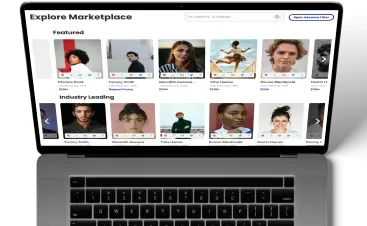What Are Brand Guidelines?
Brand guidelines are a comprehensive set of rules and standards that outline how a brand should be presented across various platforms and mediums. These guidelines ensure consistency in the brand’s visual, verbal, and experiential elements, helping to create a cohesive and recognizable brand identity.
How Brand Gating Works
- Approval Process: Brands can request that marketplaces restrict their product sales to authorized sellers only. This often involves an approval process in which sellers must provide documentation proving their legitimacy and authorization to sell the brand’s products.
- Seller Requirements: Approved sellers may be required to meet specific criteria, such as minimum purchase quantities, adherence to pricing policies, and maintaining a certain level of customer service.
- Monitoring and Enforcement: Once a brand gating policy is in place, the marketplace monitors the listings to ensure that only approved sellers offer the brand’s products. Unauthorized listings are removed, and repeat offenders may face penalties or bans.
Benefits Of Brand Gating
- Protection Against Counterfeits: Brand gating helps reduce the sale of counterfeit products, ensuring that customers receive genuine items. This protects the brand’s reputation and builds customer trust.
- Price Control: By restricting sales to authorized sellers, brands can maintain consistent pricing across various channels, preventing price undercutting that can devalue the brand.
- Enhanced Customer Experience: Authorized sellers are more likely to provide reliable customer service and a positive shopping experience, reflecting well on the brand.
- Inventory Management: Brand gating gives brands better control over their inventory and distribution, reducing the risk of overstocking or stockouts.
Challenges Of Brand Gating
- Implementation Complexity: Setting up and managing a brand gating program can be complex and resource-intensive. It requires ongoing monitoring and enforcement to be effective.
- Potential for Reduced Sales: Restricting the number of sellers can lead to reduced product availability and potentially lower sales volume, especially if the pool of authorized sellers is small.
- Seller Resistance: Some third-party sellers may resist brand gating measures, leading to potential conflicts and pushback. This can be particularly challenging for brands that rely on a broad network of sellers.
Examples Of Brand Gating
- Luxury Brands: Luxury brands often use brand gating to maintain their exclusive image and prevent unauthorized sellers from offering discounted or counterfeit items.
- Electronics: Electronic brands gate their products to ensure customers receive authentic items with valid warranties and after-sales support.
- Health and Beauty: Brands in the health and beauty sector gate their products to prevent counterfeit items, which can pose health risks to consumers.
Conclusion
Brand gating is essential for maintaining brand integrity, protecting against counterfeits, and ensuring a consistent customer experience. While it comes with challenges, the benefits of safeguarding a brand’s reputation and controlling its product distribution make it a valuable practice in the competitive world of online marketplaces. By carefully implementing and managing brand gating policies, brands can enhance their market presence and build stronger customer trust and loyalty.
Check out some other terms you may encounter in the Creator economy here.








